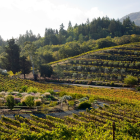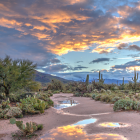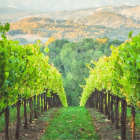Home to more than 550 wineries, Napa Valley has become synonymous with high-quality, cult Cabs and Chardonnays alike – a reputation that belies its size and output, since the region is responsible for producing just 4% of California’s wine. Now regarded as one of the finest winemaking regions in the world, Napa became the state’s very first AVA (American Viticultural Area) in 1981, but its wine-making history far predates that.
The beginnings
California’s first vineyards date back as far as the late 1700s, when missionaries planted vines to make wine for religious purposes. But while wild grapes had always grown with abundance in Napa specifically, it wasn’t until 1839 – and the arrival of European settler George Yount – that proper cultivation really began.
Yount was given the land as part of a grant from the Mexican government – California had not yet been awarded statehood. At that point he had been growing vines for several years, having already been responsible for a number of vineyards in Northern California.
Despite Yount’s endeavours, however, it isn’t him that can be credited with the growth of the wine industry in the region, although the small town of Yountville was subsequently named in his honour, and is today famous for its gourmet cuisine and Michelin-starred restaurants.
Establishing an industry
Several others followed in Yount’s footsteps, cultivating vines but not taking the endeavour too seriously. Yount’s first neighbour – an Englishman named Edward Bale – planted missionary grapes on his own land, while a Mr Samuel Brannan later purchased a large tract of land upon which he planted more than 100 acres of vines. He named the region Calistoga.
But it is John Patchett who is generally recognised as creating Napa’s first ‘official’ vineyard and winery. He started planting vines in 1854 and was producing wines – with the help of his esteemed winemaker Charles Krug (who would go on to start his own winery) – just three years later. The winemaking industry was so young in California at the time that there was no wine press available, so Pratchett and Krug instead made do with an old cider press!
The first review of Patchett’s wine, published in California Farmer Magazine, said: “The white wine was light, clear and brilliant and very superior indeed; his red wine was excellent.”
This success sparked a wave of viticultural entrepreneurism, and over the subsequent 20 years more than 140 wineries were established, including Schramsberg, Beringer and Inglenook, which are still in operation today.
The first challenges
This explosive expansion was soon brought to a halt, though, when the industry was dealt a succession of damaging blows. First, prices plummeted at the turn of the century due to a massive grape surplus. Then phylloxera arrived, devastating more than 80% of Napa Valley’s vineyards. The enactment of Prohibition in 1920 was the nail in the coffin for many enterprises, and commercial vineyards and wineries were largely abandoned for the next 14 years. Only a handful of properties were able to continue their operations by making sacramental wines for churches.
Recovery
By 1933, Prohibition had been lifted and Napa was able to get back on its feet. Existing wineries reopened and an insatiable appetite for wine after such a long period of tee-totalism meant new endeavours were well-supported. In 1944, the Napa Valley Vintners Association was formed, which today represents over 550 wineries in the region and raises more than $15 million every year to help the local community.
A global icon
Napa Valley quickly came to be revered as a supreme winemaking region by those in the know, but it wasn’t until 1976 that it exploded onto the world’s winemaking stage and the bourgeoisie in the likes of France and Italy began to take it seriously. The historic Paris Judgement of that year saw Cabernet Sauvignon and Chardonnay from California pitted against the best of Bordeaux and Burgundy in a blind tasting. The judges gave top honours to Chateau Montelena’s Chardonnay and Cabernet Sauvignon from Stag’s Leap.
Napa Valley would never be the same again, and the number of wineries quickly grew from a few dozen to the more than 500 that exist today.






